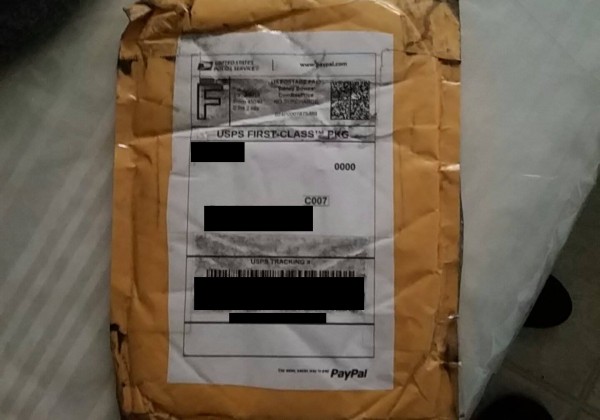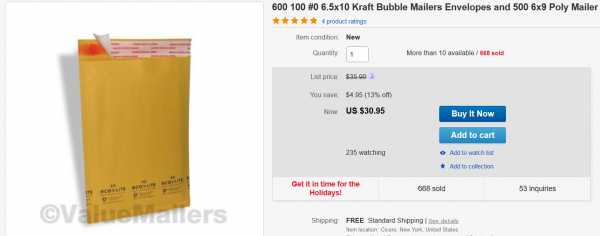Are you a Quiet Speculation member?
If not, now is a perfect time to join up! Our powerful tools, breaking-news analysis, and exclusive Discord channel will make sure you stay up to date and ahead of the curve.
These last couple months I have been fairly bearish on this MTG market. Rampant reprints, less Legacy support, no Modern Pro Tour, and sudden changes to Standard rotation have all been a lowering tide that has dropped many ships. A lot of people have noticed these recent trends, and are sounding the alarm—thus far, I myself have been fairly vocal about selling while the market still has its warmth.
But while cards like Snapcaster Mage continue their monumental decline, the reality is that there are many cards with very bullish momentum. Casual cards are especially hot, as evidenced by the recent spike in The Chain Veil and Contagion Engine.
While not nearly as expensive, Standard still has its share of valuable cards, including Liliana, the Last Hope which has stabilized in the $40 range. And while the initial hype has passed, Old School remains a robust format driving appreciable price growth.
With this in mind, I’m going to put bearishness aside this week. After all, I have made some purchases lately and my MTG speculation isn’t extinct. Instead, this week’s article contains caution from a different angle: that of the overlooked pitfalls of MTG finance.
Many times we get caught up in charts on MTG Stocks or buylist arbitrage on Trader Tools, but in reality there are some expenses we incur without even realizing it. I want to make sure I bring up some of these neglected expenses to make sure they’re all considered fully when someone decides to continue their journey through MTG finance.
Condition Errors
It’s easier to find arbitrage on obscure cards that vendors don’t check prices on frequently. Cards from Magic’s earliest years often fall into this category—especially cards that don’t ever appear on the tournament scene. Something like Pyramids from Arabian Nights or Icy Manipulator from Beta both fit this category.
My appreciation for Old School cards has really sharpened my scrutiny of card condition. I really had to when I started messing with Alpha and Beta investing—one minor flaw can transform a NM Alpha from $80 to a $50 SP copy, or even a $40 MP copy. There are many instances where an MP version of an older card is valued 50% or even less than its NM counterpart. Thus, condition is truly critical.
Unfortunately, not all sellers adhere to this same level of scrutiny. To some, older cards are expected to have a little wear so they become even less meticulous. This is absolutely the wrong direction to swing, and it has caused me some lost profits in the past. Suddenly that card being sold below top buylist on TCG Player causes you to lose money rather than gain.
Sure, you could ask for a partial refund. But do you think your seller is going to give you a 30-60% refund simply because there was a nick or two in an otherwise Near Mint card? Not likely. And while you could plead your case, chances are you will begin investing far too much time to eek out significantly reduced profits. Best to cut losses and move on at that point.
If this happens just once, it’s easy to isolate the incident in your mind and move on. But if it happens again and again, you can see how the issues could rapidly erode an otherwise profitable venture. Keep this in mind especially when dealing in high-end and Old School cards—sometimes if a price is too good to be true, it probably is. Scrutinize sellers thoroughly before seeking out arbitrage in this space.
Mail Issues
For anyone who has done even the slightest bit of MTG finance, you probably have dealt with this issue before. It doesn’t take long for that first “damaged package” or “incorrectly graded” email to arrive. Not long ago I securely shipped an Arabian Nights Diamond Valley to someone from the High End Facebook group. He was kind enough to send me a picture of the package when it arrived:
Yikes. I don’t know if the USPS decided to use this package for their vehicle traction control testing or what. Clearly I hadn’t anticipated this possibility. Luckily enough I protected the card sufficiently such that it received no damage from this incident—a dodged bullet for sure. But things could have just as easily turned sour, necessitating a partial or complete refund for a $100 card. Such an occurrence would have completely wiped out profits from many sales just to recoup the loss.
And then there’s the truly inevitable: the missing package. Due to the price differential between tracked shipping and untracked shipping, I tend to mail cards valued under $20 in plain white envelope to preserve some of my profits. This can easily backfire.
It’s the seller’s responsibility to ensure cards arrive at the destination. If they cannot prove this has happened, the seller has no choice but to refund a buyer who states cards never arrived. Even tracked packages can get lost sometimes, especially when shipped internationally. Thus it’s important to factor these losses in when determining profitability of MTG finance because they definitely have a negative impact.
Transportation and Other Hidden Costs
When I first started selling cards to make a little extra cash to support the habit that is Magic, I used to do so in the most inefficient manner possible. I bought a bubble mailer from the store for around $1 to $1.50, I would drive to the USPS, and I would pay the tracked shipping cost in person to mail the card.
There are many flaws with this system that I have since corrected. It’s fairly obvious I was overpaying for my bubble mailers—I have since begun purchasing bubble mailers in bulk 100 at a time to drive cost per envelope down to $0.19 or so. If you do larger volume, you can drive that piece price down even further by purchasing 500 at once—less than $0.07 per envelope! And I now can print my postage online using the PayPal shipping tool, eliminating the need to go into a post office to mail cards.
But there is one item that I still overlook, and I suspect it impacts others even more than it impacts me: gas.
I'm talking, of course, about the fuel it takes in your car to get you from A to B for the cause that is MTG finance. Going to scope out a collection from Craigslist? That 20-minute drive you incur could eat up nearly $5 worth of gas. Driving to the post office to pick up a package that someone shipped via registered mail? That’s another couple bucks lost. Heading to a nearby Grand Prix to buylist cards to dealers? That hour drive likely hits you for over $10 when all is said and done!
These hidden transportation expenses are easily overlooked because we look at gasoline as something outside of MTG finance needs. I have to have gas in my car, and I use my car for commuting to work anyway. So if I use a gallon here or there for MTG, I never notice. But the usage adds up to something that is most certainly nonzero and can even be significant without us even noticing!
In addition to fuel for your car, don’t overlook fuel for yourself. How many times have you picked through a collection late into the night with an energy drink at your side? Perhaps you order pizza to eliminate cooking so you can focus on the task at hand? While at that local Grand Prix, are you packing a sandwich or are you eating at the overpriced food vendor onsite?
While it’s true that we have to eat no matter what, it’s very possible we are spending more than we otherwise would have if we had not done the MTG-related task at hand. Such expenses are easy to overlook, but they too could eat into what otherwise would be considered a profitable venture.
Wrapping It Up
It’s easy to solely focus on acquisition price and sale price when calculating the financial reward of MTG finance. “I buy a card for $8 and sell it for $12, netting a $4 profit.” But this is a fallacy. In reality, no one nets profits in this way. Shipping supplies, transportation costs, the occasional partial refund, and downgraded card conditions all eat into our profits in hidden ways.
I’m not saying this is reason to stop bothering with MTG finance—my awareness hasn’t stopped me, after all. But I think it would be reckless not to consider these factors when dabbling in MTG finance going forward.
Pay attention to those occasional lost packages and make a tally. Be smart about fuel usage when driving around town to pick up collections by combining trips. Order shipping supplies in bulk and take advantage of the fact that the USPS picks packages up from your mailbox in most places. Be careful where you are purchasing high-quality Old School cards, sticking to trusted vendors with good history of selling cards with correctly labeled conditions.
All of these strategies can help you avoid incurring unnecessary losses. Just because these losses are hidden from you doesn’t mean they don’t happen. I would even argue such losses are more dangerous for being hidden because it could give us a false sense of profitability.
Perhaps when all of this is factored in, the resultant actual profits aren’t even worth the time spent to generate them? Perhaps. Perhaps this is yet another reason why I’ve been backing off on my MTG speculation lately. Too often the gains at hand end up being very small. And while I enjoy the endeavor as much as the next person, I also need to make sure I prioritize my time carefully. After all, time is the only thing you can’t get back once it’s spent. Therefore, it should be valued highest of all!
…
Sigbits
- Contagion Engine is nearly sold out at Star City Games. There are only five English copies in stock, SP at $9.35. They have zero foils in stock. If anything were to increase in price I would say it should be the foils. Right now foils are only 45% more expensive than nonfoils and this 1.45 multiplier seems incorrect given the card’s utility in Commander. If you can find foil copies, perhaps that would be the best way to play this one.
- Keep an eye on casual favorite Thieves' Auction. There are many copies in stock at Star City Games, but I’ve noticed Mercadian Masques copies creeping up on MTG Stocks’ Interests page lately. The spread between SCG’s SP prices and top buy prices are awfully narrow—though keep in mind, that condition downgrade is not negligible and makes the endeavor not immediately profitable. That said, some copies may be worth chasing. In a few months’ time, this could be a $5 rare.
- It’s been a long time since we last saw the printing of Time Sieve. Thus it’s no surprise the rare from Alara Reborn is at all-time highs lately. Star City Games is completely sold out of non-foils with a $7.99 price tag. MTG Stocks has the card valued at $12-plus so I doubt the price tag will remain under ten bucks for long at Star City Games. If you can find copies at that $8 price point and they’re truly Near Mint, it may be worth going after. Just be careful with those hidden costs I talked about above…a $8 purchase price doesn’t mean you can immediately profit overnight.









Thieves’ Auction really isn’t a casual favorite, I’m not sure what is moving its price, but I would be very hesitant to get in.
Otherwise nice article!
I used to play nothing but casual Magic and Thieves’ Auction was a favorite of mine. Perhaps it depends on play group and style.
Thanks for the comment!
We had one player in my group who would love its sort of randomness, however, besides you that’s the only other player I’ve ever come across who would like this sort of thing. The general concern with these cards is that there is already enough randomness going on in a multiplayer game and that playing such cards makes the game become even more unpredictable. In addition it’s a bit of a rules and ownership tracking nightmare. If I know this is in your deck I am probably going to try to prevent you from getting to the point of playing it.
I’m sure the 2 of you are not the only ones, but, it does seem like the kind of card to me that non-casual mtg finance people identify as a casual card and start pushing accordingly. As such this might very well be a card where the greater fools theory applies.
It’s kind of surprising how in an article about hidden costs you advocate for tracking packages over $20. The loss rate is way, way too low for that to be the correct line:
Over $50 you should definitely track (and this is where tcgplayer *requires* tracking, though they *suggest* it for $20+), so the questionable range is 20-49. But this is not evenly distributed – there are going to be more $20 deals than $49 deals. So let’s say the average maybe-trackable package is $30.
Now, a bubble mailer is approximately $2 more than a stamp, which you’d have to use anyway. So for tracking to be justified on a sub-$50 order, USPS would have to be losing 1 package for every 15 they got right – a loss rate of 1/16, or 6.25% of all packages would have to go missing! They’re obviously nowhere near that. The actual loss rate is safely capped at 1%, and well less than that in my experience (2-3 lost packages in 4+ years of selling).
I have taken to just never using a tracked mailer, unless I’m required to or someone wants to pay the difference. It’s a strategy that has saved me hundreds of dollars this year alone.
One new method I’ve been doing on anything over $30 is to simply send in a regular envelope and do First Class with insurance. This way, you are covered for loss and damage, the price is essentially the same as First class Tracking in a Bubble Mailer, and your cost for the envelope is $0.01 or less as long as it was bought in bulk. I’ve had great success wth that and in fact had zero impact to my sales for lost/damaged cards by having it insured. Just a tip since it also gives tracking, but you basically pay $0.20 more for full coverage.
With regards to lost packages, it sounds like you might be pretty lucky. Maybe it is just me but I feel people tend to “claim it didn’t show up” a lot more than 1% of the time. I just had someone recently claim it didn’t show when it WAS tracked because I typed the tracking number wrong (fortunately keep all receipts so I was able to disprove it). Maybe I just have bad luck.
Interesting position, appreciate your build! There’s one factor you may be overlooking (or you may not personally deal with): anxiety. I am one who always gets a little nervous shipping without tracking. Heck, I remember selling a piece of Power WITH tracking and it took a few days for the tracking to update, leaving me with significant stress.
So by shipping an order with tracking, it just gives me confidence that I’ll be able to detect when the package was delivered. It’s a courtesy I really appreciate from sellers, so I try to return the gesture.
With that said, as shipping costs rise, I definitely agree the $20 threshold should be re-evaluated. I think $30 is a reasonable increase which increases risk (and heartburn) only marginally.
Thanks again!
Sig
The solution to saving up gas it to ride a bike! This should be better, you can exercise while delivering magic cards to your post office.
And saves you on that gym membership!
The solution to saving up gas is to ride a bike! This should be better, you can exercise while delivering magic cards to your post office.
The solution to saving up on gas is to ride a bike! This should be better, you can exercise while delivering magic cards to your post office.
What would be really helpful for me, beyond this, is an article on how you organize your Excel files to keep track of expenses, from buying through selling, how you keep track of prices bought and sold from/to different vendors especially if purchased over time. Do you separate specs and personal use? How do you keep track for taxes? Etc.
While I’ve monitored all of this I’m not happy with how I’ve organized my MTG financial activity over time.
Patrick,
Sadly, I can’t help you much in this endeavor. I myself am just as much victim to these hidden expenses as you are. I don’t even track prices I paid for the cards, let alone the gas involved in doing so. To me, I try not to let my purchase price influence my sell price – they should be unrelated.
I do have a separate account I use for MTG, so when I spend money out of my personal account for MTG I make sure to transfer money back over to keep the two separated. In terms of cards, I don’t have issues separating specs and personal cards. The smaller my collection becomes (in terms of quantity of cards) the easier it is for me to delineate between the two in my mind.
Perhaps one of the site’s readers could offer some templates for tracking expenses?
Sig